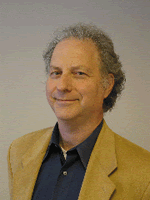As I See It, September 2010
 By Nelson Morgan, Director
By Nelson Morgan, Director
There is nothing like looking, if you want to find something. You certainly usually find something, if you look, but it is not always quite the something you were after.
- J.R.R. Tolkien
Recently I have become interested in the perception of science and engineering in our field. Consider the term “Computer Science”; hopefully we use scientific methodology in our field, but clearly much of what we do is engineering. Is this a “lower” pursuit? At Berkeley, CS is part of the EECS Department, which in turn is part of the College of Engineering. Are the CS faculty scientists, or engineers? Dictionary definitions of these terms are all over the map – including one that defines an engineer as a person who designs or builds engines – but it seems to me that these terms are best understood in the context of the goals of the professions. In practice, engineering focuses on making something work (or work better); and gaining knowledge (often about the natural world) is the fundamental goal of science. And in computer science, as well as in many other pursuits, the two often go together – as noted in the Tolkien quote above, we often start off with a goal of improving some functionality (like speech or object recognition) and in the process learn something quite different, such as a new approach to machine learning.
Scientific exploration often requires significant efforts in engineering; and good engineering practice incorporates the scientific method, and implicitly or explicitly takes advantage of scientific knowledge. Perhaps these are obvious points; yet it is common in our field to view the two disciplines as disjoint, with engineering being viewed as the lesser activity.
To be concrete, let’s take the study of automatic speech recognition (ASR), a topic that I’m pretty well acquainted with. Our research goal in this area is to significantly improve the accuracy of ASR, particularly in conditions that break current systems, e.g., for noisy or reverberant acoustic environments. This is an engineering goal, which also typically has constraints that require tradeoffs, e.g., between computational requirements and accuracy. However, it has frequently been true that advances in ASR have required the development of new mathematical formulations or models, or have been inspired by an understanding of the perception or production of speech. Science and engineering have often been good partners in this area.
On the other hand, many of the advances in ASR have required significant efforts in the processing of large files, multiple types of data sets, attention to formats, etc., and this has often been viewed as “mere engineering.” This activity can be critical, but it does make sense to think of it as being fundamentally different from the design of a new algorithm or model. Yet both can be viewed as engineering if the goal is to design or improve some system.
My point here is that much of engineering has science at its core, and much scientific inquiry can require significant engineering of a nontrivial variety. As Adam Janin of ICSI recently remarked to me, perhaps the more useful division is between research and development. The former implies the process of discovery, whether it concerns an artificial system or a natural phenomenon; while the latter suggests the incorporation of existing methods in order to complete the creation of some working entity. Faculty and staff at ICSI and places like it (although, really, there’s no place like ICSI) are focused on research, though development is typically a necessary part of the effort; but some of this research is certainly best described as engineering research.
It may be that these naming conventions are of little import. But it is astonishing to me how often I see work that is quite original in nature denigrated as “mere engineering” while other work that is derivative is elevated as “science” simply because it has no practical application. Research is not always science, and engineering is not always development. Research at ICSI is both of the engineering and scientific variety, but in both cases what gives us our reputation is the outstanding standard of excellence.
Speaking of excellence, in this issue of the Gazette, we are focusing on two of the key members of the ICSI family, both eminent scholars in their respective fields: Charles Fillmore and Richard Karp. We’re extremely fortunate to have them in our midst.
